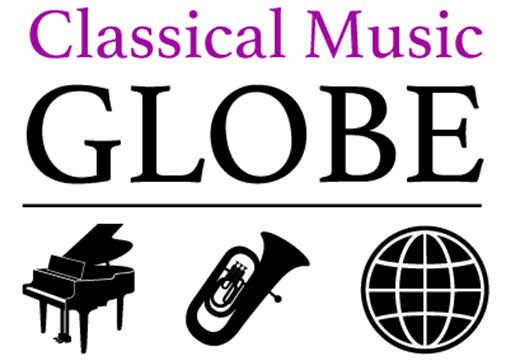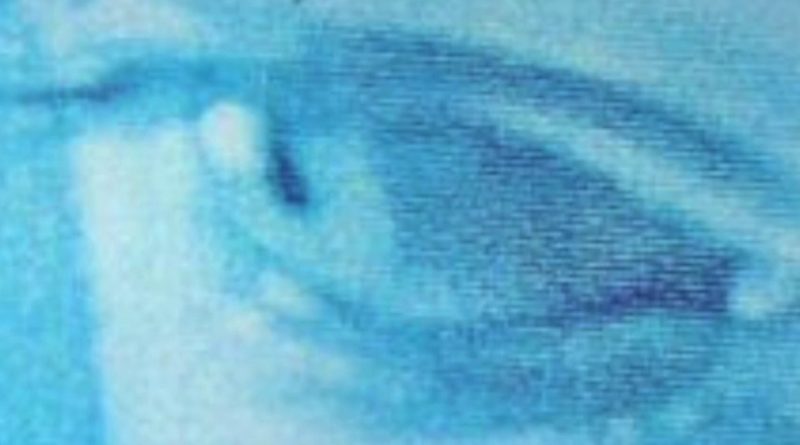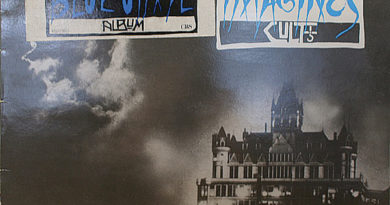The Drive to 1981 Begins: Robert Fripp’s Masterful ‘Exposure’ at 40
The King Crimson guitar wizard turned New Wave on its ear in 1979

Largely operating outside the pop mainstream (and, when he can, outside the traditional machinery of the music business itself), guitarist Robert Fripp is that unique artist who expects certain things from his audience. He believes – and operates according to a belief in – the clear distinction between listening and merely hearing.
He began his public career with King Crimson in 1969 (his earlier music with Giles, Giles & Fripp would only be discovered long after King Crimson was a going concern). And with some notable breaks, Fripp’s ongoing musical explorations with and without the group have continued until present day.
And it’s one of those sabbaticals with which this essay concerns itself. After King Crimson made what many consider its finest album, 1974’s Red, Fripp disbanded the group; he did so much to the consternation of his bandmates (drummer Bill Bruford, bassist/vocalist John Wetton and newly-rejoining multi-instrumentalist Ian MacDonald). For the time being anyway, Fripp’s interest lay outside the framework of what he felt he could do within King Crimson.
VIDEO: Robert Fripp Live at The Kitchen, NYC, February 5, 21978
Over the following five or so years, Fripp spent much time in New York City’s Hell’s Kitchen district. There (and elsewhere) he involved himself in projects that sometimes found him working as sideman, sometimes as collaborator, occasionally as band leader, a few times as producer, and often as a solo artist. He worked with some of the most original, groundbreaking and generally outside-the-box artists in music (then or now), a list that would include Blondie, David Bowie, Phil Collins, Brian Eno, Peter Gabriel, Daryl Hall, the Roches and others.
With Eno, Fripp had developed a radically new approach to guitar music, a live-plus-tape-loop technique dubbed Frippertronics. Wholly unlike the guitar sounds he had brought forth with King Crimson, his hypnotic new style expanded his already wide musical palette.
VIDEO: Robert Fripp demonstrates Frippertronics, circa 1979.
But Fripp could make guitar skronk with the best of them; some of his noisier works presage the kind of no-wave sounds that would eventually become associated with bands like Sonic Youth (from whom a significant debt is owed to Fripp).
And when Fripp decided – somewhat reluctantly – to compile his debut solo album, he managed to combine all of his interests and approaches onto a dazzlingly eclectic and arresting record. Released in 1979, Exposure isn’t just Robert Fripp’s debut as a putative solo artist; it’s a sampler that explores the depth and breadth of the man’s talents and skills.
Apparently, Exposure wasn’t initially supposed to happen, least not in the form (and the time) it appeared. As Fripp – who in doing so would display both his forthright nature and inscrutability at once – would explain in the inner-sleeve liner notes of Exposure, the album grew out of an aborted larger project (my comments in brackets):
“This album was originally conceived as the third part of an MOR [middle of the road(!)] trilogy with Daryl Hall’s solo album Sacred Songs and Peter Gabriel II [aka Scratch], both of which I produced and to which I contributed. With the non-release of Sacred Songs and the delay by dinosaurs of this album it is impossible to convey the sense which I had intended.”

Instead, Fripp goes on to explain how Exposure would now be the first entry in a newer trilogy, with the other two eventual works to be Frippertronics and Discotronics. When those did eventually appear, the former manifested as 1980’s God Save the Queen/Under Heavy Manners and 1981’s Let the Power Fall, with the latter taking the form of a self-titled 1981 record by a new art-punk band, The League of Gentlemen. And by 1981, another new group, originally called Discipline, became King Crimson Mk IV.
The aforementioned trilogy would come to be described (by its creator) as The Drive to 1981. With the benefit of hindsight and context, all of the threads of Fripp’s work prior to and in the wake of his debut come together (if not always neatly) on Exposure.
“Preface” is the opening track. A snippet of conversation – audio verité style – opens the piece. It’s Brian Eno, speaking to Peter Gabriel. He says, “Er, can I play you, um, some of the new things I’m doing, which, I think, could be commercial?” Perversely, that’s followed immediately by some wordless vocal harmonies – stacked not unlike Frippertronics guitar lines – that are anything but commercial; Beach Boys it ain’t. Then a voice does a count-in for a song (“three, four”) followed not by music but by the ringing of a telephone. Someone coughs, rises from a chair and walks across the stereo spectrum (left to right) to answer it.
Instead of a voice, we hear a tinny, low-fidelity sound of Fripp’s manic, vaguely punky electric guitar. After a few seconds, a second guitar – sounding much like the first – joins in higher fidelity and much louder. “You Burn Me Up I’m a Cigarette” is a Frippian rethink of classic ’50s rock ‘n’ roll, with Hall and Oates’ Daryl Hall on lead vocals. The song is structured vaguely like standard I-IV-V early rock, but with enough off-kilter detours to twist it out of classic form, nearly beyond recognition. Stranger still, the song’s whacked-out yet clever lyrics come courtesy of Fripp himself; writing words is something he had very rarely done and wold almost never do again.
VIDEO: Robert Fripp – You Burn Me I’m a Cigarette
Fans of King Crimson’s Red receive a wonderful treat with “Breathless.” Though the specific players on each track aren’t noted, the song – very much a cousin to Red‘s title track – features a very progressive Narada Michael Walden on the drum kit, and Tony Levin (of future Crimsons) on bass. Full of grace and crushingly heavy power, “Breathless” demonstrates that Fripp wasn’t quite done with the style he explored on recent King Crimson releases. (In 2018 and beyond, “Breathless” has found its way into the live set of the eight-headed beast incarnation of King Crimson VIII.)
VIDEO: Robert Fripp – Breathless
The noisy “Disengage” combines Frippertronics with more thunderous Crimson-style playing, and features a Joanna Walton lyric delivered wild-style by Van Der Graaf Generator vocalist Peter Hammill. Clearly not designed for easy listening, it’s something of a preview of the jagged approach Fripp would employ on David Bowie’s “It’s No Game” from 1980’s Scary Monsters (And Super Creeps).
“North Star” is a dreamy, subdued blues with deeply emotional Daryl Hall lead vocal; Hall’s Philly soul approach here may remind some listeners of Todd Rundgren. The song is atypical of Fripp’s work up to this point, but shows a style he’d sometimes pursue with the Adrian Belew-era King Crimson.
VIDEO: Robert Fripp – North Star…with Daryl Hall
The dramatic “Chicago” is built around a lumbering and beefy bass part with skittering, sonorous piano. Hamill sings in histrionic fashion; Fripp’s corkscrew guitar lines are otherworldly.
“NY3” is a demented instrumental, sort of a prog-metal precursor to the Brian Eno/David Byrne project My Life in the Bush of Ghosts, released in 1981. The decidedly NSFW lyrics-as-such are a found-sound argument between a father, mother and daughter. It’s a deeply unsettling slice of life with a nearly atonal, no-wave musical backdrop.
Side One of the Exposure LP concludes in more tuneful fashion, with the elegiac “Mary,” featuring a lovely vocal by Terre Roche. The song and arrangement wouldn’t be at all out of place on the Roches’ Robert Fripp-produced self-titled debut, released in 1979.

Remarkably for an artist so closely associated with the progressive genre, Fripp keeps all but one of the first side’s tracks under the four-minute mark; in fact, six of the eight cuts each last less than three minutes.
Flipping the vinyl LP over and dropping the needle yields the album’s title track. Fripp’s signature guitar is joined by spoken-word snippets (Gurdjieff scholar J.G. Bennett) and a decidedly funky beat that has more in common with Talking Heads than King Crimson. Throughout, someone spells out the letters of “exposure” in an emotionless voice. And just to make things weirder still, Terre Roche wails, moans and screams the word “exposure” in an almost free-jazz mode.
“Häaden Two” and “Urban Landscape” are more Crimson-style heaviness, with more (seemingly random) spoken-word bits flown in. The cuts sound a bit like the soundtrack to a very scary horror film, albeit with voices saying things like Fripp’s immortal line, “incredibly dismal, pathetic chord sequence.” Robert Fripp might not be widely renowned for his sense of humor, but clearly he has one. Bennett is heard to say, “You should know you have an unpleasant nature, and dislike people. This is no obstacle to work.”
VIDEO: Robert Fripp – I May Not Have Enough of Me, But I’ve Had Enough of You
Decidedly not a love song, “I May Not Have Enough of Me But I’ve Had Enough of You” showcases more hyperactive, free guitar work with vocals (not quite a duet) from Roche and Hammill. Those somehow seem to match the music, which is rooted in free jazz, art rock and punk.
After seven seconds of audio titled “First Inaugural Address to the I.A.C.E. Sherborne House” comes a piece of pure Frippertronics, “Water Music I.” A beautiful and contemplative instrumental piece, it demonstrates the depth of emotional content within the Fripp/Eno innovation. And years before global warming/climate change would become recognized for the serious threat it poses to humankind, the spoken-word piece concerns that very thing.
All of which provides a simply perfect lead-in to the centerpiece of Exposure, the Peter Gabriel song “Here Comes the Flood.” Gabriel would record multiple versions of the song – including the best-known one on his 1977 solo debut Peter Gabriel (aka Car) – but none compares with the stunning simplicity of the recording on Exposure. Gabriel’s voice and acoustic piano are joined only by Frippertronics guitar; nothing else is needed. Gabriel’s heart-rending vocal wrings all of the emotion out of his lyrics, and as so often the case, the spaces between the notes are every bit as important as the notes themselves.
VIDEO: Robert Fripp and Peter Gabriel – Water Music I – Here Comes the Flood
“Here Comes the Flood” segues right into more Frippertronics, “Water Music II.” As a kind of palliative soundtrack for the listener to meditate upon Gabriel’s tour-de-force, “Water Music II” runs beyond the four-minute mark. In such a context, its relative length makes sense.
A very brief track, “Postscript,” features some sloshing water, and a voice – Eno, perhaps, but whomever it is seems to be smirking – saying, “So … the whole story is completely untrue, a big hoax.” The final three words are looped, and then a phone is slammed down on its cradle, followed by the sound of someone walking away. Exposure thus ends.
Since its original release, Exposure has been reissued multiple times, with various bonus tracks. All are worthwhile, but it’s effectively impossible to improve upon the breathtaking power and eclecticism of the original. Robert Fripp would release more solo projects in the years to come, but none offered the musical smorgasbord of his 1979 debut.
VIDEO: Promo Film – Exposure Robert Fripp





A fantastic album that lead me off in so many directions (Sacred Songs, the Roches, Eno, etc.). Easily in my top 50 (at minimum) favorite discs.
Unquestionably believe that which you stated. Your favorite justification appeared to be on the web the simplest thing to be aware of.
I say to you, I certainly get annoyed while people consider worries that they just do
not know about. You managed to hit the nail upon the top and also defined out
the whole thing without having side effect , people could take
a signal. Will probably be back to get more. Thanks